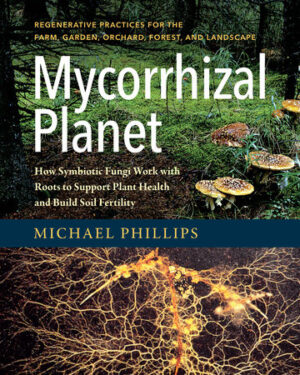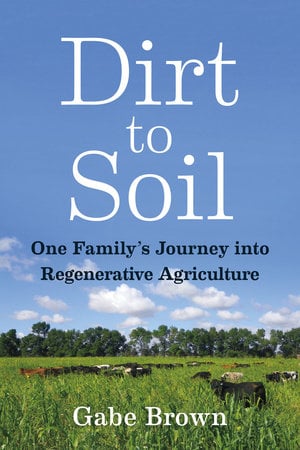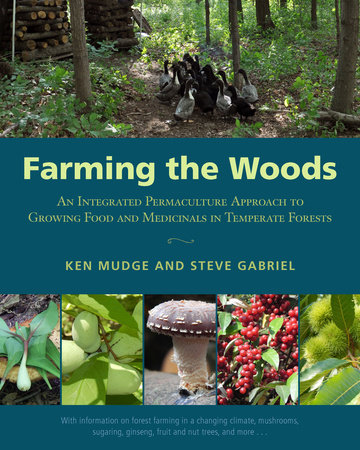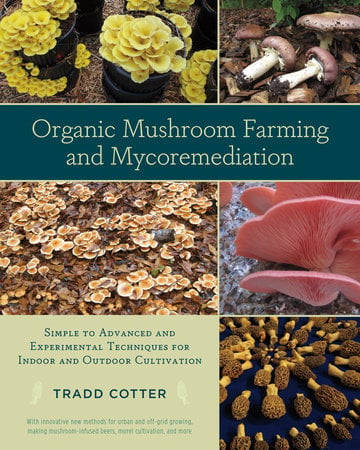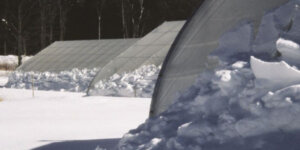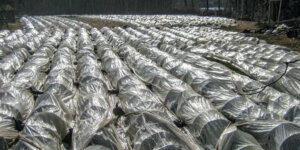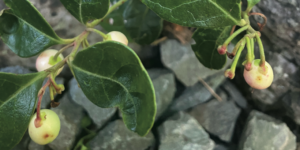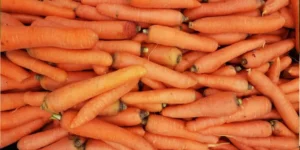The Secret Life of Fungi
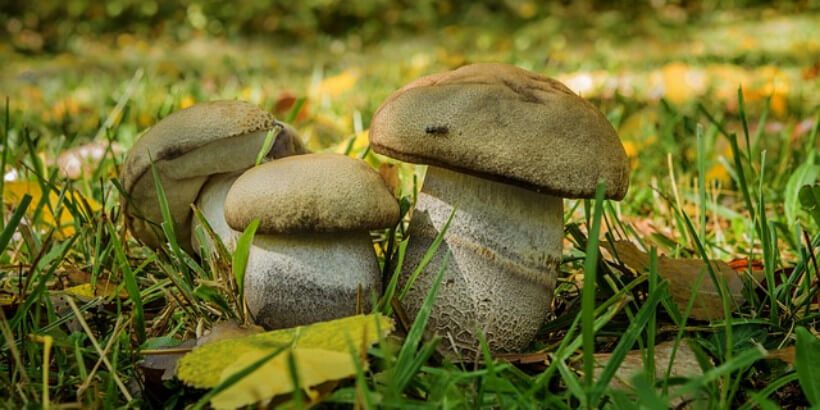
Fungi have intricate lives, behaviors, and uses most people are unaware of. Mychorrizal fungi form symbiotic relationships with the root systems of other plants. The crucial, symbiotic role that fungi play in everything from healthy plants to healthy soils to a healthy planet.
The following is an excerpt from Mycorrhizal Planet: How Symbiotic Fungi Work with Roots to Support Plant Health and Build Soil Fertility by Michael Phillips. It has been adapted for the web.
Fungal Consciousness
Mycorrhizal fungi have been waiting a long time for people to catch on. Building soil structure and fertility that lasts for ages results only once we comprehend the non-disturbance principle. This alone guides the fate of an exceptional, yet too often forgotten, soil ally.
Mycorrhizal fungi partner with the root systems of most every plant on our planet.
The story behind this symbiotic relationship of fungi with roots launches all sorts of earth awareness. Carbon gets sequestered in more meaningful ways than “human offsets” will ever achieve. Healthy plant metabolism keys to balanced nutrient exchange delivered by fungal allies offering a savvy deal for sugars that plants create through photosynthesis. A profound intelligence exists in this underground economy that in turn determines the nutrient density of the foods we eat. Pick up a handful of old-growth forest soil and you are holding 26 miles of linear mycelium, most of it mycorrhizal.
Exploring the science of symbiotic fungi in layman’s terms sets the stage for practical applications across the landscape. The real impetus behind gardening with mulches, digging with broadforks, shallow cultivation, forest-edge orcharding, no-till farming, low-impact forestry, and “everything permaculture” is to disturb the soil as little as possible. This in turn allows the fungal dynamic to thrive. Virtue lies in doing less so as not to screw things up, a tenet that I suspect most of us can handle.
Just listen to people try to say mycorrhizae the first time when encountering this word, and it’s obvious that a number of basics need to be covered. Those of us already applying fungal notions in working with plants know that the soil food web is important . . . yet we’re not necessarily tuned into the full nuance of what’s going on down below. Getting advanced about all this isn’t so much PhD territory as it is appreciating how amazingly well plants and soil organisms “do” health. The complexity of enzyme synthesis and bidirectional protoplasm flow in mycorrhizal networking reflect Mother Nature in her finer hours.
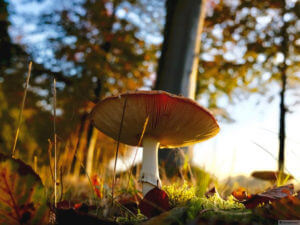
New insights currently being gained through molecular exploration can be coupled with the dedicated observations of microbiologists, soil scientists, and plant physiologists over the decades. I come at these vast fields of knowledge with a farmer’s sense of the practical coupled with gratitude for science that offers a systems view.
The parallels between human health and plant health just make this account all the richer. Thomas Jefferson has been described as having a limitless curiosity, backed by a deep faith in agrarian democracy. This nation’s third president took into consideration a broad perspective in everything, from founding a university for higher learning to the pursuit of happiness as a natural right. We need more of this now. Those who know fungi must talk with those who know plants. Those who know phytochemical progression must talk with those who know the smell of rich earth in the furrow.
The facts and nothing but the facts come from the vast research laid out in Mycorrhizal Symbiosis, last updated by Sally Smith and David Read in 2008.
Our collective future pivots on many people coming to understand that soil fungi matter.
That plant ecosystems must be respected. That soil stewardship is our highest calling. Such has been said before, but now the jig is truly up. We either recognize the urgency involved at this critical juncture or the next century won’t necessarily include the human race. Take these as fatalistic statements if you wish . . . or come on over to the other side.
Plant trees. Make compost. Sow cover crops. Harvest healing herbs. Build stone foundations. Chop wood. Let the chickens roam about. We share such pursuits with many of you. All sorts of amazing farmers, ranchers, gardeners, herbalists, orchardists, landscape professionals, and foresters are leading the charge. People are integrating livestock, market gardens, native plantings, and perennial crops into multifaceted systems.
Goodbye monocultures, tillage, and bare dirt. Goodbye clear-cuts and monster skidder ruts. Rebuilding soil and increasing diversity go hand in hand with making a living doing authentic work that can be enjoyed. Equally important are the communities that support these efforts. From making local agriculture viable to organizing guided mushroom tours through community forests; from gardening up high on urban rooftops to remediating desperately hurting ground—we ourselves become healthier through every direct connection made with the soil that sustains us all.
Discovering the miraculous in the common would be the fungal slant on all this. The everyday ways of very small critters hold lessons for our species as far as planetary commitment goes. Honing one’s ability to intuitively see the interaction between fungi and roots in the microscopic realm is how fungal consciousness takes hold. That we have things to learn from fungi isn’t such a very big stretch to make. Hyphae reach out to nourish and communicate. Our neighborhoods would thrive if only people reflected the same sense of provision as found in any mycorrhizal network. Spores become the dreams we give our children. Life truly wants to go on.
Yes? Was that a question in the back? Who am I to expound on the ways of mycorrhizal fungi and healthy plants, you ask? No doctorate, no master’s, no bachelor’s degree in any such subjects. But for a found love of the soil—and more than a few fruit trees—I very well might never have ventured below. Days that began as a civil engineer on municipal construction projects inside the Beltway of this nation’s capital shifted radically when I up and retired at age 23 to seek a more heartfelt path. Leafing through Thoreau, a rucksack of berries, and a classified ad in a home-steading magazine soon brought me to the White Mountains of New Hampshire. Long story short, I got my hands in the earth.
You become a “plant person” by discovering a passion within yourself for growing, well, just about everything.
A “tree person” happens to go a bit further out along the limb, that’s all. Enter the whims of microbe eating microbe, that very first dipping of bare roots into mycorrhizal inoculum, and the dawning realization that orchard trees want to grow in a fungal duff ecosystem. Root tips proceed behind a vanguard delving into soil aggregates and rock crevices where little other than the finest hyphae can go. Ever notice how the universe only grows bigger as you zoom in on minutiae? I was hooked on learning more about the soil food web and what makes for long-lasting soil fertility. Back on the receiving end, plants prove healthier when you honor that Nature knows best. Put another way, those apple trees of mine proved to be the very best teachers. Plants and fungi become that much more resilient by looking out for the other. The resulting phytochemical cascade in turn serves both the farmer and the herbalist. Worlds merged yet again as fascination led the way.
Are you getting a feel for how this works? Thinking fungally, exploring fungally, intuiting fungally. We’re each quite capable of taking what’s been gifted to us and going further still.
Trusting that journey makes it possible for me to share practical teachings about mycorrhizal fungi and real-time plant health. The two are intimately linked in ways that make a holistic approach all the more spot-on. I always liked what Liberty Hyde Bailey of Cornell had to say, slightly paraphrased: If a grower knows why, he or she will teach themselves how. You’re about to get a good dose of plant wisdom interspersed with some guy humor to keep things hopping. Jump around; take what’s useful; have fun. Every growing season is a renewed opportunity to let the green world astound.
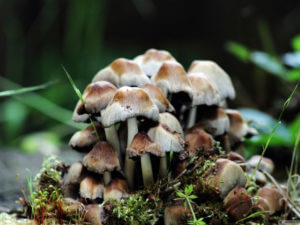
Knowing about species adaptability, propagules, and nutrient transfer mechanisms makes us better earth stewards, frankly. The lure of the “fungus-root” comes into its own once we appreciate it’s not about green plants alone. All starts to click as growers recognize why investing in health is far preferable to dealing with the myriad of problems that arise as a result of mistreating soil life.
I double dog dare ya to embrace holistic means in growing food for your family and community . . . as of course you will after taking in this wholesome plant conversation. Working with resistance metabolites and fungal allies beats toxic thinking hands down.
The language of trade helps in understanding how deals get done. Profound intelligence exists in natural systems, so prepare to be awed. And then prepare to not disturb the impeccable! Soil aggregates are the direct result of respecting the primary role of fungi in what might best be thought of as biologically induced alchemy.
Thinking fungally puts the right framework on how to garden, design landscapes, and grow tree fruit. Fostering fungal precepts makes for more resilient forests and farms. Finding the edible among mycorrhizal mushrooms in the wild is a passion unto itself.
Our species has some daunting choices to make, but in the end it will come down to each one of us finding joy in fungal ways. Transformation happens when we take the initiative to do better by soils everywhere. The fungi will take it from there.
This notion that “plant toes being tickled by fungi” bestows life to our dear planet—and so many two-leggeds don’t even have a clue—means the time has come to tell the full story about mycorrhizal fungi.
Recommended Reads
Recent Articles
Think you can’t enjoy winter gardening without a heated greenhouse? As long as you’re adding layers to keep your crops warm, you can grow food all winter long!
Read MoreWant to grow year-round, but a greenhouse feels like a big investment? When it comes to cost and flexibility, low tunnels are the all-around winners.
Read MoreWintergreen is the stunning evergreen groundcover that’s a game-changer for your garden! It’s cherished for its aromatic leaves, vibrant fall color & bright berries.
Read MoreGrow winter carrots for a sweeter & more flavorful harvest! Ditch the bland, store-bought carrots this winter! Grow your own winter carrots for a sweeter and more flavorful twist 🥕🥕
Read MoreThe fig tree is more than just a fruit-bearing wonder. The complex nature of these trees is beyond fascinating. They are the ultimate ecosystem superheroes!
Read More

